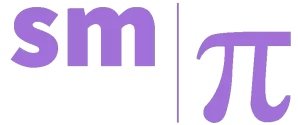It can be difficult choosing colors from scratch, but often times clients will not know at all what they want. Choosing from pre-made palette can be helpful, or looking at colors used for schools, flags, or other organizations can help capture a feeling or generate a response. Still, how to use the colors and make them work together takes some forethought. With this in mind, I worked out a strategy to selecting 4 colors and their roles in a design, simplifying the process if graphic design isn’t your wheelhouse.
Hexadecimal Colors
Sometimes referred to as HTML colors, hex color codes are used pretty much everywhere and this is the recommended format to be used for color selection. This will be a 6 character string, with characters ranging from 0 (dark) to F (bright), and preceded by a # sign. These strings are divided into 3 sections of colors, with the first two representing red (#FF0000), the second two representing green (#00FF00), and the last 2 for blue (#0000FF). White is represented as #FFFFFF and black as #000000, but I generally recommend going for near black (#080808) and off white (#FAFAFA) just to take into account screens that aren’t able to correctly display these colors. This way you always know what you are getting.
Primary
The primary color serves as the cornerstone of the design, establishing the dominant visual theme. It can function as either the foundational foreground or background shade. Its counterpart, the secondary color, should adhere to AA/AAA compliant contrast ratio for accessibility. This ensures that the logo or website remains legible and visually striking to a wide audience.
Online tools are readily available to verify this compliance, offering a convenient means to fine-tune the color selection. I recommend using the one provided at WebAIM, as they provide the contrast ratio and easy to use tools to help with the selection process.
Secondary
The secondary color serves to complement the primary color. It should also meet the AA/AAA compliance standards, similar to the primary color, to maintain visual harmony and accessibility. This color choice is integral in balancing the overall design, providing a contrast that accentuates the primary color while maintaining coherence within the color palette.
Accent
The accent color is the dynamic element of the palette, used sparingly yet effectively to enhance the depth and vibrancy of it’s surroundings. It is employed in areas requiring an extra touch of visual flair, such as highlights, shades, or to enrich the overall depth of the design. Like its counterparts, it must adhere to AA or AAA compliance in relation to either the primary or secondary color, ensuring that the design remains accessible and appealing.
Shadow
The shadow color, which can also be represented in Hex or RGB formats, ideally possesses an element of transparency. This subtle transparency allows for a softer, more nuanced appearance, giving images and text within the logo or website a gentle yet effective ‘pop’. The use of shadow is particularly effective in adding depth and sophistication to the design, making it stand out while maintaining a professional and polished look.A simple grey hex code can be used in place of any kind of transparency, but don’t feel limited to basic dark shadows, as it can be used in a lot of different and creative ways, utilizing any color available on the spectrum.
Selecting a color palette for logos and websites is both a science and a creative endeavor. By adopting a structured approach to choosing hexadecimal colors, the process becomes more manageable and less daunting, especially for those not deeply entrenched in the nuances of graphic design. The strategy of delineating roles for primary, secondary, accent, and shadow colors provides a clear roadmap for creating visually appealing and accessible designs.

